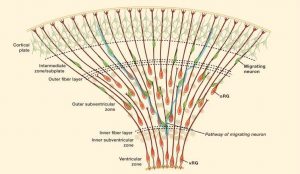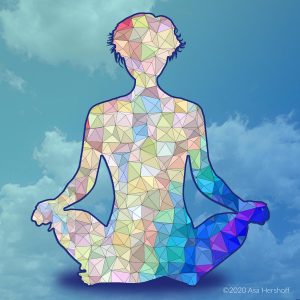The early hunter-gatherer model of self-sufficient groups characterized itself with a necessary coherence and unity. This holism, forced by survival, prompted the emergence of certain roles according to the members’ individual strengths, which became identifiable and maintained by internal culture. However, those roles were limited to the immediate requirements of the community, most likely suppressing and compromising the emergence of any unique pursuits not imperative to survival. This is understandable since in that time pure survival was the primary determinant shaping role assignment among community members. Since this mode of survival existed for almost two hundred thousand years, it is natural to suspect that evolution capitalized on the roles that emerged and sustained those communities/societies. They are precisely the archetypes Carl Jung speaks of – inherent holistic qualities which we instinctively identify.
Through successive evolutions of societies into more sophisticated and complex forms of organization, as with the onset of agriculture and settlement in the Neolithic period or population shift in the Industrial era, one can observe a gradual increase and refinement of roles. This process has also contributed to a gradual increase of the possibility to refine one’s uniqueness and let it flourish, resulting in what could be described as refinement of one’s identity. The key aspects facilitating this process were: the ability to share and thus develop common interests with the larger community, and a greater likelihood of those unique abilities to coincide with self-sustenance. It’s as if greater complexity feeds off the rich resources of human potential since it has the capacity to nourish, develop and sustain it.
The modern, information age offers numerous advantages, but also upon further reflection raises concerns. The primary, positive aspect of the facility of communication in the www age is the drift toward unification on a more global level – the birth of a global community. There’s great potential there, because by its nature www provides an accessible and dynamic platform for discussion in the safety of one’s living room or café across the street. Virtual communities arise spontaneously and the scope of their character is as rich as are people’s curiosities, interests, shared practices and life contingencies. Consider an online community of stamp collectors” as a simple example; the members will value and respect each other in virtue of mutual informative contributions, but inevitably certain exchanges of ideas and worldviews will occur. And this is precisely when the magic and the most valuable aspect of such communities emerges; being part of a virtual community, the members needn’t share the same geographical locations, sets of political views, cultural denominations and religious beliefs – those factors are secondary to the shared love for stamps.
Such chance exchanges, once they take place, stimulate reflection and revision of previously held views and beliefs, in other words – offer a global perspective. How dramatically such interaction contrasts with the more traditional and geographically confined communities where general and local views are more likely to be shared and hence enforced rather than revised.
However, there may be certain drawbacks to this sudden shift from local and physical, to virtual and global engagement. Identifying the other members of the virtual community merely as valuable mirrors of one’s interests, if pursued this way, may result in a local social detachment – of course this does not apply to communities which augment their natural growth with technology. Also, the pursuit of expressing and sharing one’s particular interests tends to objectivate others as mere intelligent and interactive sources of that interest. This is due to our obscured focus, since we’re divorced from the immediacy of their wellbeing, social level and health – irrelevant aspects of others by definition of some specific virtual community. Again, this issue only applies where the Internet is the primary means of communal engagement.
Ultimately such objectivation of the phenomenon of another human being in this manner leads to their particularization and disintegration. In a physically unified and close group, where each individual represents most possibilities of human interaction, the communal character tends to be holistic, integral and universal, by default – one being represents many aspects of human potential. Interaction on most levels is carried out with one, or few individuals. In contrast, in the sphere of virtual communities the tendency to isolate human unique traits leads to an unintentional diminishment of their universal potential. This may result in conditioning oneself to such behaviour and carrying it over to everyday interactions – the direction of language, conversational attitudes and attention span, all seem to provide some evidence to support such tendencies. Those concerns may, or may not be exaggerated – the readers can decide for themselves.
On a less general note, the character of spiritual and religious communities has also undergone progressive evolution and has encountered various challenges. The character of sangha, and its interactions with the wider laic community has raised some internal questions, as Raymond Lam observes:
There has, to me, always been something quirky about expressing Buddhism (or any philosophy of transcendence) through the impositions of the IT age. It is as if by renouncing the world we are right away forced to engage with it. A scholar called Rupert Gethin wrote: “The genius of the Vinaya [the ecclesiastical code of legal procedures and discipline] is that having invited the monk to give up society it then requires him to live in dependence upon it, thereby forcing him back into a relationship with it… Many of the rules of the Vinaya concerned with food, for example, are clearly designed to force members to be dependent on lay support.” Is this what characterizes our small Buddhistdoor community – transcending the moral limitations of a technologized world with technological means?
The concept of a community itself is an elusive one, as vindicated by continuous debates among sociologists and anthropologists of various schools. One aspect seems to be clear though, irrespective of how one chooses to define the subject – it is a dynamic and continuously evolving phenomenon.













